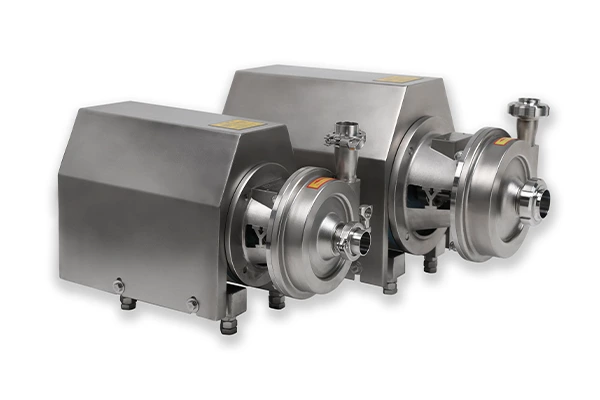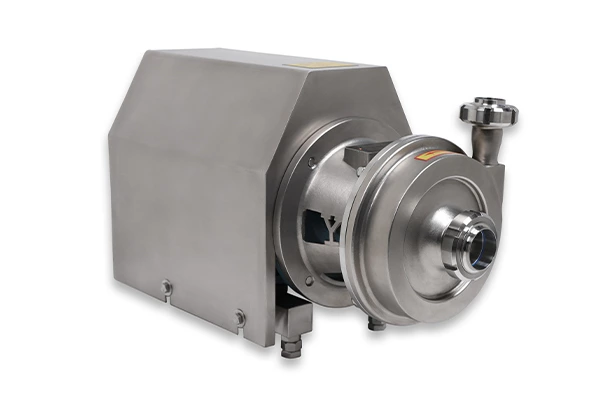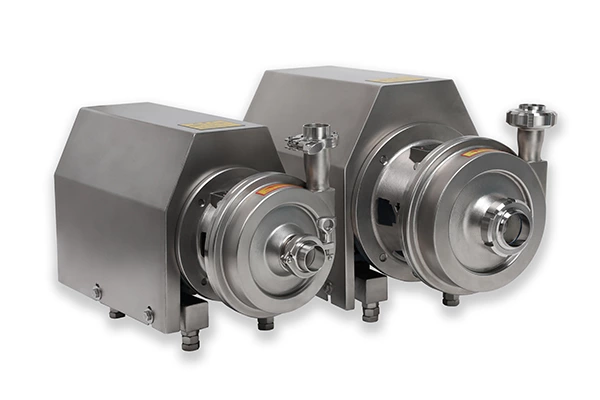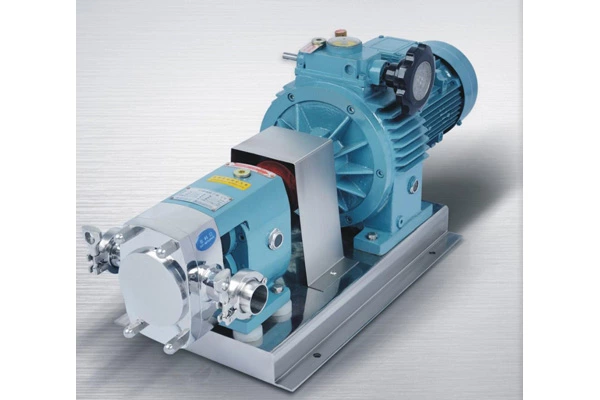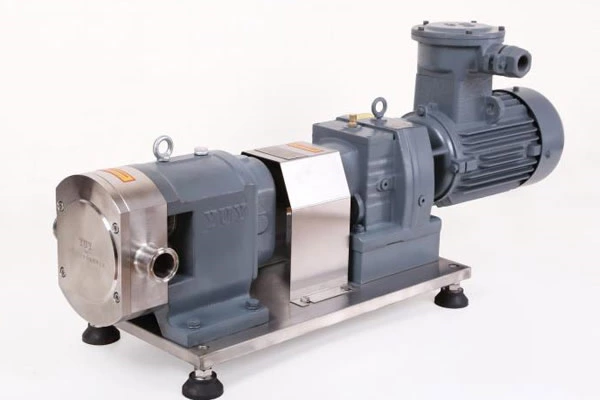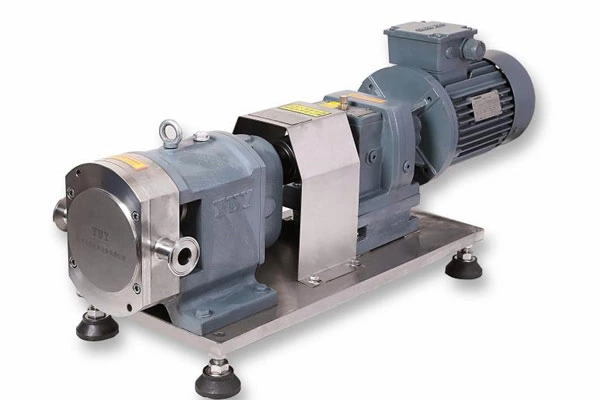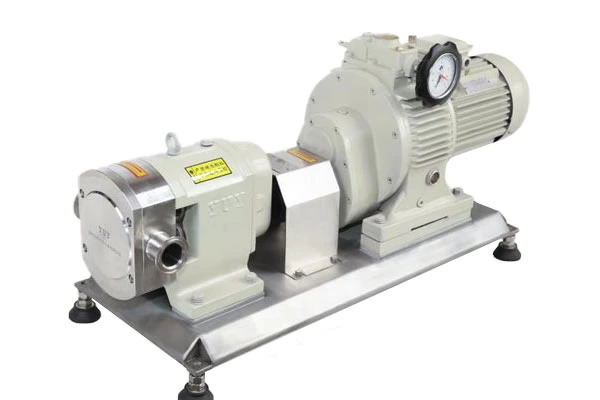Vaporization Conditions Of Sanitary Centrifugal Pumps Cause Cavitation Damage To Pump Impellers
Sanitary Centrifugal Pump The water at the suction port is vaporized into bubbles, which are crushed by high pressure before the discharge port of the sanitary centrifugal pump (when the water particles move on the impeller flow channel, the energy is constantly increasing, and the position where the bubbles are crushed is also unique). Due to the sudden "disappearance" of the bubbles, the water particles are strongly impacted, causing cavitation damage to the pump impeller, and at the same time causing the pump outlet water pressure to fluctuate, and in severe cases, pressure loss occurs.
The vaporization condition of water at the suction port of the sanitary centrifugal pump is: its pressure is suddenly lower than the saturated steam pressure corresponding to the water temperature at that location. A heating system that is running stably, with stable pressure, water temperature, and flow, will reduce the water pressure at the inlet of the sanitary centrifugal pump when encountering one of the following situations (one of them).
The sanitary centrifugal pump is a vertical submerged structure. When working, the pump body is immersed in water, and the submerged depth can reach 0.5 to 5m. It adopts a unique single-blade or double-blade impeller structure, which can effectively pass fiber materials 5 times the pump diameter and solid particles with a diameter of 50% of the diameter.
Sanitary centrifugal pumps should be managed and used by dedicated personnel, and the circuits and operation of sanitary centrifugal pumps should be checked regularly. After each use of sanitary centrifugal pumps, especially for viscous slurries, the sanitary centrifugal pumps should be placed in clean water and run for several minutes to prevent sediment from being left in the pump. After the sanitary centrifugal pumps have not been used for 300-500 hours, the oil in the oil chamber should be filled or replaced to keep the mechanical seal in a good lubrication state and increase the service life of the mechanical seal.
Sanitary centrifugal pumps do not have problems such as cavitation damage and water diversion. Especially the latter point brings great convenience to the operator. The vibration and noise are small, the motor temperature rise is low, and there is no pollution to the environment. It is precisely because of these advantages of sanitary centrifugal pumps that they are increasingly valued by people and their scope of use is becoming wider and wider. From the original simple use of conveying clean water to the current use of various domestic sewage, industrial wastewater, construction site drainage, liquid feed, etc. It plays a very important role in municipal engineering, industry, hospitals, construction, restaurants, water conservancy construction and other industries.
Before starting the sanitary centrifugal pump, a qualified electrician should check the system to ensure the following electrical protection measures: 1. The power supply device should be safe, reliable and normal. The power supply voltage and frequency should meet the requirements (voltage is 380v±5%, frequency is 50hz±1%), and the instantaneous voltage deviation should not exceed 10%. If the power supply is far away from the sanitary centrifugal pump, the cross-sectional area of the cable should be thickened and the joints should be as few as possible, otherwise the voltage will drop too much, and the cable joints should be sealed and waterproofed to prevent leakage; 2. Before the operation of the sanitary centrifugal pump, a 0~500 megohmmeter should be used to check the insulation resistance between the phases and relative to the ground of the motor. The minimum value should be greater than 2mω; 3. In the four-core cable, the one with the symbol "┴" is the grounding wire (usually a green and yellow two-color wire or a black wire). In order to ensure safe use, it must be firmly grounded and 50mm longer than other wires; 4. When conditions permit, electrical protection devices may include: grounding protectors, ground leakage current interrupters, etc. However, in any case, a slow-blow fuse that matches the rated current value of the electric pump must be installed; 5. The electrical control device should be moisture-proof and installed in a moisture-proof area. The cable should be placed so that it does not block the suction port of the pump; 6. Check the direction of rotor rotation. The rotation direction should be checked after the initial startup or reinstallation of the submersible sewage pump. Incorrect rotation direction will reduce the efficiency of the submersible sewage pump or cause the impeller to fall off and other damages. To determine the rotation direction of the rotor, before the final installation of the submersible sewage pump, it should be lifted and operated in a jog mode. If the following conditions are met, the rotation direction is correct. Otherwise, the positions of any two of the three-phase lines on the controller should be exchanged to change the rotation direction: looking down from the top of the pump, the rotor rotates clockwise, and looking up from the bottom (i.e. the direction of the suction port) it can be seen that the blades rotate counterclockwise.
